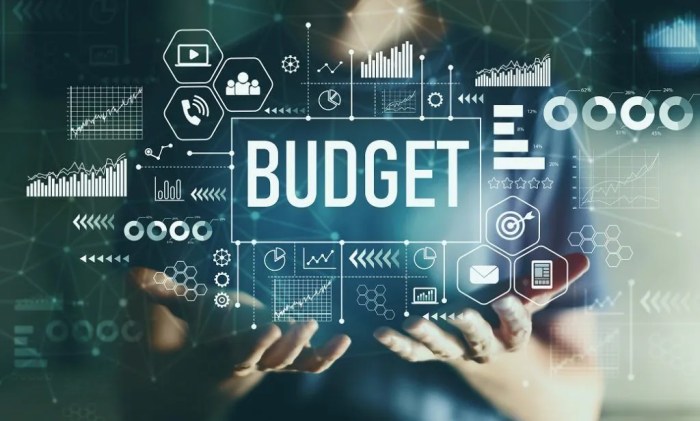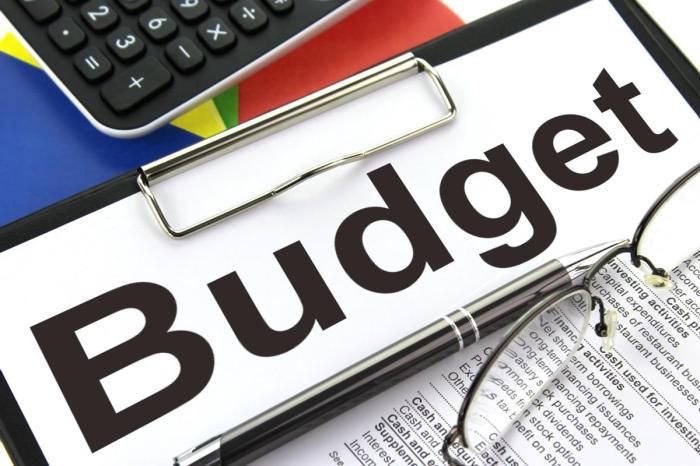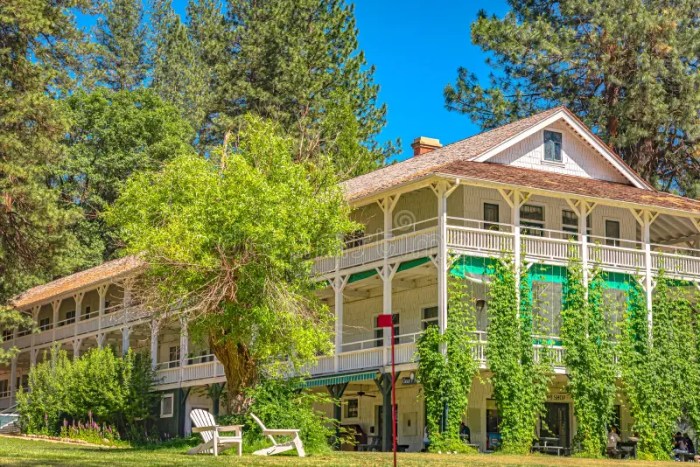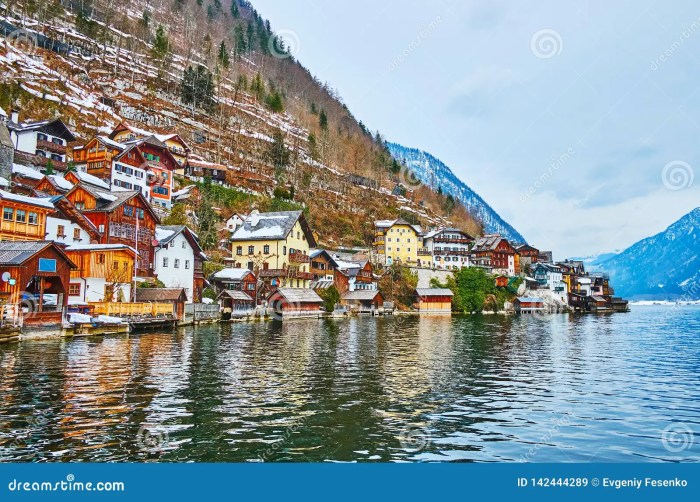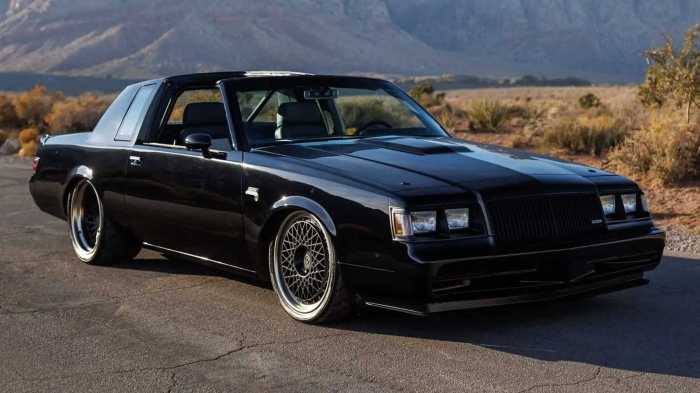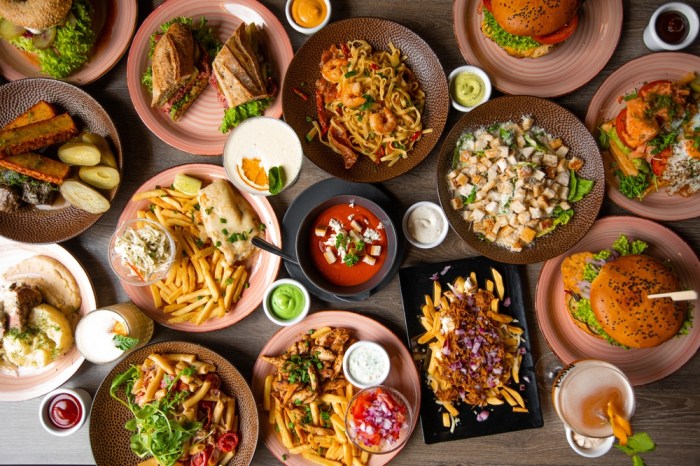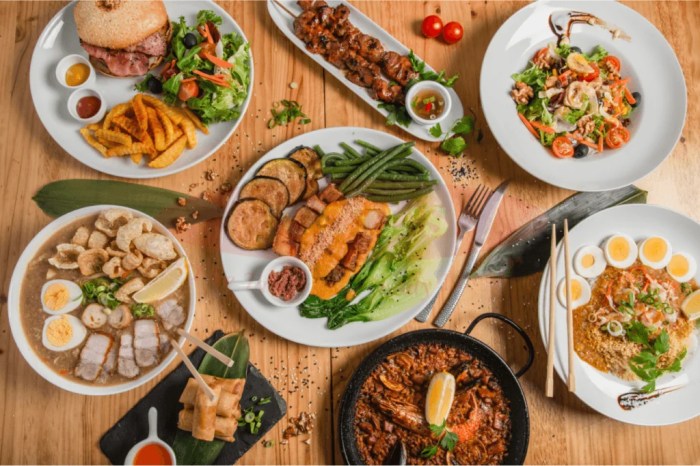Best time to visit Atlanta: Planning a trip to the vibrant city of Atlanta? This guide dives deep into the ideal time to experience all Atlanta has to offer, from bustling festivals to serene parks, and everything in between. We’ll explore the best months for outdoor adventures, cultural experiences, and nightlife, while also considering crowds, weather, and budget considerations.
Whether you’re a history buff, a foodie, or a festival fanatic, understanding the nuances of Atlanta’s seasons will help you plan the perfect trip. From the mild spring weather perfect for exploring parks to the electric energy of fall festivals, we’ll cover it all. Let’s uncover the secret to the best time to visit Atlanta for
-you*!
Ideal Times for Different Activities
Atlanta offers a diverse range of experiences, from sprawling parks to vibrant nightlife and historical landmarks. Knowing the best time to visit for your specific interests can significantly enhance your trip. Planning around the weather and seasonal events can make your Atlanta adventure even more enjoyable.Understanding the ideal time for different activities allows visitors to optimize their experience.
This includes maximizing outdoor enjoyment, attending festivals, soaking in the city’s nightlife, and exploring historical sites. This section will detail the best times for each, helping you plan your Atlanta getaway.
Ideal Time for Outdoor Activities (Parks and Hiking)
Spring and fall are generally the best times to enjoy outdoor activities in Atlanta. The weather is pleasant, with comfortable temperatures and minimal rain. Spring offers blooming flowers and the promise of warmer weather, while fall brings stunning foliage and crisp air. These seasons offer ideal conditions for hiking in the surrounding areas and exploring parks. Summer months can be too hot and humid for extended outdoor activities, while winter months might experience chilly temperatures and occasional snow.
Ideal Time for Festivals and Events
Atlanta hosts a plethora of festivals and events throughout the year. Summer typically sees the largest concentration of festivals, with many celebrating music, food, and local culture. Spring and fall also feature numerous events, catering to a wider range of interests. Consider checking local event calendars to plan your visit around specific festivals. This will allow you to participate in unique celebrations and experiences.
Ideal Time for Experiencing Vibrant Nightlife
Atlanta’s nightlife thrives year-round. Summer offers outdoor concerts and events, while spring and fall provide a pleasant ambiance for enjoying bars and restaurants. Winter can also offer cozy and intimate experiences, particularly in the city’s unique pubs and clubs. The best time depends on the specific type of nightlife you are seeking.
Ideal Time for Visiting Atlanta’s Historical Sites and Museums
Atlanta’s historical sites and museums are enjoyable year-round. The weather generally doesn’t significantly impact your ability to explore these venues. However, consider the crowds and potential for event-related disruptions when planning your visit, especially during peak tourist seasons. Visiting during the off-season might offer a more peaceful and focused experience.
Comparison of Months and Weather Conditions
| Month | Average Temperature (°F) | Weather Conditions | Ideal Activities |
|---|---|---|---|
| March | 55-65 | Mild, occasional showers | Outdoor walks, parks, early festivals |
| April | 65-75 | Pleasant, blooming flowers | Outdoor activities, parks, festivals |
| May | 75-85 | Warm, humid, potential thunderstorms | Festivals, concerts, some outdoor activities |
| June | 80-90 | Hot, humid, frequent rain | Festivals, air-conditioned museums, concerts |
| July | 85-95 | Very hot, humid, frequent rain | Festivals, museums, indoor activities |
| August | 85-95 | Hot, humid, frequent rain | Festivals, museums, indoor activities |
| September | 75-85 | Pleasant, cooler, fewer storms | Outdoor activities, festivals, parks |
| October | 65-75 | Cool, pleasant, some rain | Outdoor activities, festivals, parks, hiking |
| November | 55-65 | Mild, occasional showers, potential for rain | Outdoor activities, museums, historical sites |
| December | 45-55 | Cool, occasional rain, possible snow | Museums, historical sites, indoor activities |
| January | 40-50 | Cold, occasional snow | Museums, historical sites, indoor activities |
| February | 40-50 | Cold, occasional snow | Museums, historical sites, indoor activities |
Weather Considerations

Atlanta’s weather is a significant factor to consider when planning a visit. The city experiences distinct seasons, impacting outdoor activities and overall comfort levels. Understanding the typical temperature and precipitation patterns will help you choose the best time to enjoy your trip.Understanding Atlanta’s weather patterns is crucial for a comfortable and enjoyable trip. From sweltering summers to crisp autumns, each season presents unique opportunities and challenges for visitors.
The humidity, temperature fluctuations, and potential for extreme weather events can all influence your itinerary.
Typical Seasonal Weather Patterns
Atlanta’s climate is humid subtropical, characterized by hot, humid summers and mild, pleasant winters. Spring and fall offer the most agreeable temperatures for outdoor exploration. The transition seasons typically feature pleasant weather, while summer and winter present more pronounced temperature and humidity differences.
Average Temperatures and Precipitation
The following table provides a snapshot of the average high and low temperatures, along with the chance of rain for each month. This data is based on long-term averages and can be useful for planning.
| Month | Average High (°F) | Average Low (°F) | Chance of Rain (%) |
|---|---|---|---|
| January | 52 | 35 | 45 |
| February | 57 | 40 | 40 |
| March | 65 | 45 | 40 |
| April | 72 | 53 | 45 |
| May | 80 | 62 | 50 |
| June | 87 | 68 | 60 |
| July | 90 | 72 | 65 |
| August | 89 | 70 | 60 |
| September | 84 | 65 | 55 |
| October | 74 | 55 | 40 |
| November | 64 | 45 | 45 |
| December | 55 | 38 | 40 |
Extreme Weather Events and Their Impact
Atlanta, like many parts of the southeastern United States, is susceptible to extreme weather events. Summer heat waves can become uncomfortable, potentially impacting outdoor activities and causing discomfort. Thunderstorms and occasional tornadoes can occur, especially during the spring and summer months. It’s important to stay informed about potential weather alerts before embarking on outdoor adventures. For example, severe thunderstorms can lead to flash floods, affecting travel plans.
Humidity Levels
Atlanta’s humidity is a prominent feature throughout the year. The highest humidity is typically experienced during the summer months, making outdoor activities feel more intense. Even during the cooler months, the humidity can still be noticeable, contributing to a certain level of warmth and moisture in the air. The humid subtropical climate plays a role in the city’s weather patterns.
Crowds and Event Calendars
Atlanta, a vibrant city brimming with attractions, sees fluctuating tourist traffic throughout the year. Understanding the ebb and flow of crowds is key to maximizing your visit and avoiding potential hassles. Major events significantly impact both visitor volume and prices, so planning ahead is crucial.Atlanta’s popularity makes it a prime destination for numerous events, from sporting championships to concerts and festivals.
These events, in turn, influence crowd sizes and accommodation costs. Predicting the exact impact of a particular event on crowds can be challenging, but understanding general trends helps you anticipate and prepare for potential changes.
Typical Tourist Traffic
Atlanta experiences high tourist traffic during the spring and fall seasons, coinciding with pleasant weather and fewer crowds than the summer months. Winter, while offering some bargains, often has fewer visitors due to the cooler temperatures and potentially fewer major events.
Impact of Major Events
Major events, such as the Atlanta Braves playoff games or major concerts, can drastically affect the city’s atmosphere. The increased demand for accommodations and transportation during these periods often results in higher prices. Fans and attendees seeking tickets for major events are often willing to pay a premium, influencing the overall cost of the visit. For example, during the Super Bowl, hotels and flights often sell out well in advance and increase significantly in price.
Least Crowded Times to Visit
For a more relaxed and less crowded experience, consider visiting Atlanta during the early spring (March-April) or the late fall (November-December). These periods offer pleasant weather and fewer major events compared to the peak summer season. Lower demand for accommodations and transportation often leads to more affordable options during these times.
Cost Considerations
The cost of accommodations and transportation varies considerably based on the time of year and the presence of major events. During peak season (spring and fall), prices for hotels and flights are generally higher. Off-peak seasons (winter and summer) often present more budget-friendly options, but this is contingent on the presence of significant events or festivals. You can expect a greater variation in cost, depending on demand.
Major Events Calendar
| Month | Event | Estimated Crowd Size |
|---|---|---|
| March | Atlanta Marathon | 10,000-15,000 participants |
| April | Atlanta Restaurant Week | Variable, depending on promotions and restaurants involved |
| June | Atlanta Jazz Festival | 20,000-30,000 attendees |
| July | Atlanta United FC Home Matches | Variable, depending on the match and the stage of the season |
| September | Atlanta Food and Wine Festival | 25,000-40,000 attendees |
| October | Various sporting events | Variable, depending on the specific event |
Note: Crowd sizes are estimations and may vary based on specific events and promotion.
Accommodation and Transportation
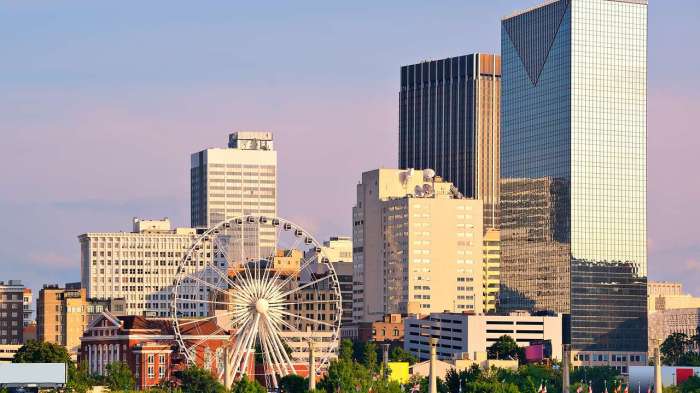
Atlanta offers a diverse range of accommodation options, from budget-friendly hotels to luxurious resorts, catering to various preferences and budgets. Transportation in Atlanta is vital for navigating the city, and understanding its nuances is crucial for planning an enjoyable trip. Choosing the right time to visit can significantly impact both accommodation costs and transportation efficiency.Atlanta’s accommodation and transportation landscape shifts throughout the year, influenced by factors like tourism demand and seasonal events.
This section explores these fluctuations, helping you make informed decisions about your trip.
Hotel Price Variations
Understanding hotel pricing fluctuations is essential for budgeting. Hotel rates tend to be higher during peak seasons, typically the spring and fall months, as well as around major holidays. This is often due to increased demand from both leisure and business travelers. Conversely, off-peak seasons, such as the winter months and the summer months outside of major holidays, usually offer more competitive rates.
Transportation Availability and Congestion
Atlanta’s transportation system, including public transit, ride-sharing services, and rental cars, experiences fluctuations in availability throughout the year. Public transportation systems are generally consistent throughout the year, but ridership and service frequencies may vary. Ride-sharing services and rental cars can be affected by seasonal demand, with higher availability during off-peak seasons and potential surge pricing during peak periods.
Traffic congestion is another critical factor to consider, often worse during peak travel times and holidays.
Traffic Congestion
Traffic congestion is a significant concern, particularly during peak travel periods. Atlanta’s roads can experience heavy traffic during rush hour, major events, and holidays. Real-world examples include the increased traffic during the holiday season and major sporting events. Planning your travel time and choosing alternative transportation options are crucial for mitigating potential delays.
Spring is generally the best time to visit Atlanta for pleasant weather and fewer crowds. But if you’re craving a change of pace, and want to experience the stunning beaches of Texas, check out the top picks in best beach towns in texas. Once you’ve had your fill of sun and sand, though, Atlanta’s still a great autumn destination with fewer summer crowds and cooler temperatures.
Transportation Costs
Transportation costs fluctuate depending on the time of year. Peak seasons typically see higher prices for ride-sharing services and rental cars, often due to increased demand. On the other hand, off-peak seasons usually provide more affordable transportation options.
Comparison of Average Costs
| Month | Average Hotel Rate (USD) | Average Transportation Cost (USD per day) |
|---|---|---|
| January | $150 – $200 | $20 – $30 |
| April | $180 – $250 | $25 – $40 |
| July | $160 – $220 | $20 – $35 |
| October | $190 – $260 | $25 – $45 |
Note: These are average estimates. Actual costs can vary based on specific hotel choices, transportation methods, and individual travel needs.
Budgeting and Value
Atlanta offers a fantastic blend of culture, history, and entertainment, but the cost can vary depending on the time of year. Understanding these fluctuations allows you to plan a budget-friendly trip and maximize your experience. Whether you’re a budget traveler or looking for a luxurious stay, this section will help you navigate the cost landscape and make informed decisions.
Cost of Visiting Atlanta During Different Times of Year
The cost of visiting Atlanta fluctuates significantly throughout the year. Peak season, typically spring and fall, sees higher prices for flights, accommodation, and popular attractions. Shoulder seasons (early spring and late fall) offer a more moderate price point, while winter and summer often present more affordable options, though weather considerations should always be factored in. Understanding these trends allows you to strategically plan your trip for optimal value.
Cost Comparison of Food, Activities, and Entertainment
Food, activities, and entertainment costs in Atlanta mirror the broader price trends. During peak seasons, restaurants and popular attractions often charge higher prices for their services. This is particularly true for popular tours, shows, and sporting events. Off-peak periods, on the other hand, usually offer more affordable options, making them ideal for budget-conscious travelers.
Value Proposition for Visiting Atlanta During Different Months
The value proposition for visiting Atlanta changes depending on the month. Spring and fall offer pleasant weather, fewer crowds, and more opportunities for outdoor activities, which can translate to a more enjoyable experience without the premium price tag. Winter can offer more affordable deals on accommodation and attractions, while summer, with its warm weather, offers a different type of value.
Cost-Effective Activities During Off-Peak Seasons, Best time to visit atlanta
Off-peak seasons provide opportunities for cost-effective experiences. Museums often have discounted admission rates during the off-season, and many local restaurants offer special deals and promotions. Outdoor activities, such as walking tours or exploring parks, are always budget-friendly. Planning activities around festivals and events in the off-season can also yield great value.
Estimated Costs for Different Activities and Meals (Example)
| Month | Accommodation (Estimated) | Food (Estimated) | Activities (Estimated) | Transportation (Estimated) |
|---|---|---|---|---|
| March | $150-$250/night | $50-$75/day | $25-$50/activity | $20-$30/day |
| June | $180-$300/night | $60-$80/day | $30-$60/activity | $20-$35/day |
| September | $160-$280/night | $55-$70/day | $20-$45/activity | $20-$30/day |
| December | $120-$200/night | $45-$60/day | $15-$30/activity | $20-$25/day |
Note: These are estimated costs and may vary depending on your choices and preferences.
Spring in Atlanta is fantastic, with pleasant temperatures and fewer crowds. But if you’re looking for something truly unique, consider visiting the northern point of the Bermuda Triangle, a fascinating spot with a rich history. visit the northern point of the bermuda triangle to experience the mystery for yourself. Ultimately, the best time to visit Atlanta depends on your priorities, whether it’s avoiding crowds or soaking up the vibrant culture.
Specific Event Information
Atlanta boasts a vibrant calendar of events throughout the year, drawing visitors from near and far. Understanding these events can significantly enhance your trip planning, allowing you to tailor your visit to coincide with specific interests and maximize your experience. From bustling festivals to intimate concerts, Atlanta offers a diverse range of experiences.
Major Festivals and Events
Atlanta hosts numerous festivals and events that celebrate diverse cultures, music, and traditions. These events often offer unique experiences and opportunities for cultural immersion. Planning your trip around these events can make it more engaging and memorable.
- Atlanta’s BeltLine Festival: This multi-day festival typically occurs in spring and features a wide array of activities, from live music and food vendors to art installations and family-friendly events. The festival usually lasts for several days, allowing visitors ample time to explore the diverse offerings. Specific dates vary from year to year, so it’s recommended to check the official website for precise details.
This is a great opportunity to experience the vibrant atmosphere of the BeltLine and enjoy the local arts scene.
- Atlanta Jazz Festival: A beloved annual event, the Atlanta Jazz Festival showcases some of the best jazz musicians in the world. It typically takes place in late spring or early summer. The festival usually spans a few days, with numerous performances throughout the day. This festival is a highlight for jazz lovers, offering a chance to experience live music in a celebratory setting.
Spring is generally the best time to visit Atlanta for pleasant temperatures and fewer crowds. However, if you’re looking for a truly unique experience, consider a trip to the Ngala Treehouse in South Africa. It’s a stunning escape for nature lovers, and a great contrast to the bustling city life. But if you want to visit Atlanta, remember spring is a good bet for comfortable weather.
Spring is the best time to explore the city’s parks and gardens and the fantastic food scene. Ngala treehouse South Africa will offer a different kind of experience. Enjoy the warmer weather and vibrant atmosphere of Atlanta.
Expect potential ticket demand and early reservations.
- Atlanta Food and Wine Festival: This festival, held in the fall, brings together local and regional chefs, wineries, and breweries. It features food tastings, cooking demonstrations, and wine pairings. The duration is usually a few days, and the event often attracts a large crowd, so plan accordingly for traffic and parking. This is an excellent opportunity to discover new culinary experiences and sample local favorites.
Event-Specific Promotions and Considerations
Many events offer special deals and promotions to attract attendees. These can range from discounted tickets to special packages.
- Early Bird Discounts: Many festivals and events offer early bird discounts for tickets or other merchandise. This is a great way to save money and secure your spot at the event.
- Package Deals: Some events offer package deals that combine admission to multiple events or attractions. This is often a cost-effective way to experience a wider variety of activities within the festival.
Potential Delays and Disruptions
Large events in Atlanta, especially festivals, can sometimes lead to traffic congestion and potential delays. It’s crucial to factor in travel time and consider alternative transportation options, especially during peak hours or days of major events. Traffic patterns and public transportation routes often shift during major events.
Major Event Calendar (2024)
| Event | Dates | Location | Description |
|---|---|---|---|
| Atlanta BeltLine Festival | May 11-13, 2024 | Various locations along the BeltLine | Multi-day festival with music, art, food, and family activities |
| Atlanta Jazz Festival | June 21-23, 2024 | Centennial Olympic Park | Showcase of jazz music with numerous performances |
| Atlanta Food & Wine Festival | October 26-28, 2024 | Various locations | Food tastings, cooking demonstrations, and wine pairings |
Alternative Activities and Attractions: Best Time To Visit Atlanta
Atlanta offers more than just bustling city life. Beyond the iconic attractions, numerous hidden gems and unique experiences await those seeking a less crowded and more personalized Atlanta adventure. This exploration delves into alternative activities, considering weather and crowd factors to provide a richer understanding of the city beyond the typical tourist hotspots.
Exploring Atlanta’s Hidden Gems
Discovering the less-trafficked corners of Atlanta is a rewarding experience. These hidden gems often provide a more authentic glimpse into the city’s soul, free from the overwhelming presence of crowds. From intimate art galleries to tranquil parks, these alternatives allow visitors to connect with the city on a deeper level.
Seasonal Alternative Attractions
Atlanta’s diverse offerings are best enjoyed when considering the season. Different activities thrive in different climates and timeframes. For instance, exploring the city’s vibrant farmers’ markets is ideal during the warmer months when fresh produce abounds. Likewise, winter provides opportunities for cozy evenings spent in one of Atlanta’s many unique coffee shops or enjoying a theatrical performance.
Neighborhood-Specific Experiences
Atlanta’s neighborhoods each have their own unique charm. Certain neighborhoods are better suited for particular seasons or activities. For instance, exploring the historic charm of Decatur during the fall offers a delightful blend of autumnal colors and local shops. The vibrant street art scene of the Old Fourth Ward is best appreciated on a warm day when the atmosphere is lively and the works are best viewed.
Weather and Crowd Considerations for Activities
| Attraction | Best Time (Weather) | Best Time (Crowds) | Alternative (Weather/Crowd) |
|---|---|---|---|
| Piedmont Park | Spring and Fall (moderate temps) | Weekdays (less crowded) | Early morning or late evening for fewer crowds and better photo opportunities |
| Fernbank Museum of Natural History | Any time (indoor attraction) | Weekdays (less crowded) | Weekdays for a more focused visit. |
| Atlanta Botanical Garden | Spring and Fall (pleasant temps) | Weekdays (less crowded) | Early morning or late evening |
| Atlanta History Center | Any time (indoor attraction) | Weekdays (less crowded) | Check for special events or workshops |
The table above provides a concise comparison of popular attractions, their ideal weather conditions, crowd levels, and alternative options to optimize the visitor experience, considering both comfort and enjoyment. Choosing the right time for the right attraction can significantly enhance your Atlanta experience. For example, visiting the Atlanta Botanical Garden during a spring day with pleasant temperatures will allow you to fully appreciate the beauty of the gardens without the heat of summer.
Visualizations
Atlanta, a city pulsating with energy, offers a diverse range of experiences, from bustling urban scenes to tranquil park escapes. Imagine the vibrant atmosphere, the rich tapestry of sights and sounds, and the unique charm that awaits visitors at different times of the year. This section paints a picture of these experiences, highlighting the city’s character in various settings.Understanding the atmosphere of Atlanta during different seasons and events is key to planning a truly memorable trip.
Visualizing these scenes allows you to anticipate the energy and ambiance of each location, making your visit even more enriching.
Bustling Atlanta Street Scene (Peak Tourist Season)
The heart of Atlanta thumps with activity during peak tourist season. Imagine a vibrant street scene, alive with the cheerful chatter of tourists, the rhythmic pulse of street performers, and the melodic sounds of live music wafting from open-air cafes. Pedestrians navigate the throngs, eager to explore shops brimming with unique souvenirs and local crafts. Colorful banners and festive decorations add to the festive atmosphere.
The air hums with a lively energy, palpable in the animated faces and the constant flow of activity.
Quiet, Peaceful Park Scene (Off-Peak Time)
Contrast this with a quiet, peaceful park scene during an off-peak time. Imagine the gentle rustling of leaves in a hushed park, bathed in the soft light of a golden afternoon. Families picnic amidst a serene atmosphere, the children’s laughter a melodic counterpoint to the chirping of birds. The air is fresh and clean, offering a welcome respite from the city’s bustle.
A sense of calm pervades the space, perfect for reflection and rejuvenation.
Vibrant Festival Atmosphere (Major Event)
Atlanta transforms into a vibrant festival hub during a major event. Picture the lively energy of a crowded festival grounds, filled with the infectious rhythms of live music. Colorful stalls overflow with delectable food and crafts, attracting diverse crowds. The air crackles with excitement as attendees enjoy the performances and festivities. A festive atmosphere pervades every corner of the event space, painting a vivid picture of community spirit and celebration.
Atlanta Restaurant Atmosphere (Slow Time of Year)
During a slow time of year, Atlanta restaurants often exude a more intimate and relaxed atmosphere. Imagine a restaurant with soft lighting, perhaps a cozy fireplace adding warmth to the room. The staff is attentive and welcoming, providing a personal touch to the dining experience. The air is less crowded, allowing for more relaxed conversation and enjoying the company of fellow diners.
This ambiance creates a serene and enjoyable atmosphere, perfect for a more contemplative dining experience.
Visualizing Weather Conditions
Atlanta’s weather varies significantly throughout the year. Understanding these conditions helps prepare for your visit.
- Sunny Day: Imagine a brilliant blue sky, bathed in the warmth of the sun. The air is crisp and clear, perfect for outdoor activities. The vibrant green of the city’s parks shines brightly in the sunlight, contrasting beautifully with the colorful buildings and streets.
- Rainy Day: Picture a city shrouded in a gentle drizzle, the soft patter of rain against the pavements creating a soothing melody. The city takes on a unique character, with the vibrant hues of the city dulled by the light rain. The air feels cool and damp, and the anticipation of a warm cup of coffee or hot tea is welcome.
- Hot Summer Day: Imagine the oppressive heat of a summer afternoon, the air thick and humid. The city feels heavy under the weight of the sun. The streets are less crowded, and people seek refuge in air-conditioned spaces. The heat is noticeable, and precautions must be taken.
- Cold Winter Day: Picture the crisp, cold air of a winter day, the streets covered in a blanket of snow. The city takes on a different charm, with the snow-covered trees and buildings creating a winter wonderland. A sense of tranquility is felt as people enjoy the beautiful scenery.
Ending Remarks
In conclusion, the best time to visit Atlanta depends heavily on your priorities. Spring offers pleasant temperatures for outdoor activities, while fall bursts with festivals and events. Summer brings vibrant nightlife, but also potentially higher prices and more crowds. Winter, while offering lower prices and fewer crowds, may not be ideal for outdoor enthusiasts. Use this guide as your compass, considering your interests and budget to find the perfect time to experience the magic of Atlanta.

